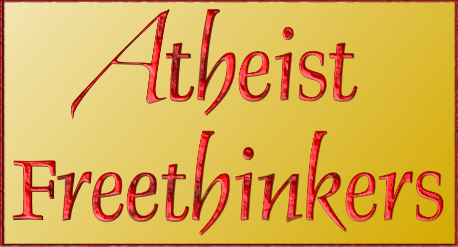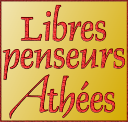David Rand
2021-01-21
In the Same Series:
- What Was Left Unsaid at the Trial of Bill 21 (THIS PAGE)
- Does the EMSB Condone Child Abuse?
- Oral Arguments of AFT—Courtroom Log of Hak versus AGQ
- An Orgy of Hateful Hyperbole—Courtroom Log: Week 5
- Courtroom Log: Week 4
- Courtroom Log: Week 3
- Courtroom Log: Week 2
- Courtroom Log: Week 1
We continue to await the decision of Justice Marc-André Blanchard in the court challenge to An Act respecting the laicity of the State, a.k.a. Quebec Bill 21. During the lengthy court proceedings held in November and December of 2020, we heard a plethora of pseudo-arguments from the opponents of secularism. And yet, on the side of pro-secularists, alloted much less time than opponents to argue our case before the judge, several important arguments were not adequately presented.
Here is a list (not necessarily exhaustive) of several key points which were not sufficiently explained—and in some cases, not mentioned at all—in pleadings before the judge:
- The analogy between religious minorities on the one hand, and minorities of other types (racial, of sexual orientation or handicap, etc.), so frequently used by the opponents of secularism, is completely false and, furthermore, implies a total negation of freedom of conscience.
- Religious affiliation is a choice, not an inescapable destiny. Or at least it should be a choice, because if it is not, then, again, we have a total negation of freedom of conscience.
- Freedom of religion is not absolute, because no freedom is absolute. The rights of one person end, or at least are limited, where they bump up against the rights of others.
- Religious symbols often have political implications. If the symbol is worn by a civil servant or a teacher while on the job, then it certainly has political meaning. The religious neutrality of agents of the State, as required by secularism, is thus tightly linked to political neutrality.
- Bill 21 does not target any persons or group of persons. On the contrary, it targets certain behaviours, just as anti-smoking regulations and highway speed limits do.
- A religious symbol can be removed. And no surgery is required to do so.
- Believers are entirely responsible for their religious beliefs and practices. The State has no obligation whatsoever to accommodate them.
- The objective meaning of the Islamic veil, such as the hijab, is to signal that the woman wearing it is pure, while those who do not wear one—especially Muslim women who do not wear the veil—are impure women who deserve to go to hell.
- Several religious practices, if they are imposed on children, constitute child abuse. For example: fasting, wearing the veil, being deprived of music, being deprived of medical care, etc.
- To label a child with the religion of his or her parents constitutes a denial of that child’s freedom of conscience.
- A negative attitude (for example, towards certain religious practices, or towards those who promote such practices), prevalent in a population, may very well not be a prejudice, but rather a justified and legitimate judgement.
- A major motivating factor among those who oppose Bill 21 and secularism, both of which are strongly supported by Quebecers, is the perennial prejudice against Quebecers which is so commonplace among Canadians. In other words, racist attitudes in connection with Bill 21 are not to be found so much among those who support the law, but rather among those who oppose it. Contrary to the defamatory discourse of the opponents of secularism, pro-secularists do not claim that all Muslims are terrorists. Rather those same opponents frequently suggest that Quebecers in general are responsible for the anti-Muslim violence of the few (such as the attack on the Quebec City mosque). The remarks of lawyer Aziz Hussain during the legal proceedings are a blatant example of this.
Among the several points above, those which deal with freedom of conscience, such as the first one, are of the greatest importance, because protecting that freedom is central to the secular program.
False Comparisons
Throughout the legal proceedings, lawyers against Bill 21 tried repeatedly to draw an equivalence between religious minorities on the one hand and minorities of other types, such as racial minorities, gays, the disabled, and so on, on the other hand. For example, on November 30th, Maître Grossman went so far as to declare that religious affiliation, as expressed by wearing a religious symbol, is a “personal immutable characteristic” or “changeable only at unacceptable cost to personal identity.” All such comparisons are dishonest and completely ignore the crucial issue of freedom of conscience. If there is a valid analogy to be made, it is between religious affiliation and political opinion, as both are in fact opinions adopted by the individual and which that individual may easily change.
The testimonies of experts Eric Hehman, Paul Eid and Thomas S. Dee, for example, were almost entirely dedicated to this false parallel, this confusion—deliberate apparently—between the inalterable and the changeable. Hehman even admitted during his testimony that he does not even attempt to distinguish between religious identity and other types of identity. When the judge asked Eid how one can equate hostility against religious minorities with racism, Eid replied that he rejected any distinction between the two and that he did not even understand the question. As for Dee, his expertise dealt only with racial minorities, especially Afro-Americans, in the United States.
Religious affiliation is a choice or at least should be a choice—otherwise, the freedom of conscience of the individual is completely negated. But with all the other identities (race, sexual orientation, handicap, etc.), we are dealing with an innate or immutable characteristic which is not at all comparable to religion. As Georges-Auguste Legault put it so well, “A handicap is not a voluntary symbol. It is not a choice. But to wear or not to wear a religious symbol is a choice.”
In her oral arguments for the English Montreal School Board (EMSB) Maître Perri Ravon praised the supposed merits of the EMSB which goes out of its way to accommodate any and every religious practice. But she said absolutely nothing about the freedom of conscience of children. She said nothing to suggest any distinction between children and the religion of their parents. On the contrary, she implicitly assimilated each pupil with the parents’ religion, thus violating children’s rights.
In summary, the opponents of Bill 21 systematically sowed confusion by essentializing religious affiliation and completely ignoring freedom of conscience, whether that of public school students or civic service users. They thus completely neglected a major goal of secularism, the protection of freedom of conscience.


 AFT on Twitter
AFT on Twitter Amis et amies de Libres penseurs athées
Amis et amies de Libres penseurs athées Atheist Alliance International (AAI)
Atheist Alliance International (AAI) Atheist Census Canada
Atheist Census Canada Humanist Perspectives
Humanist Perspectives Libres penseurs athées
Libres penseurs athées LPA-AFT on Heylo
LPA-AFT on Heylo LPA-AFT Youtube Channel
LPA-AFT Youtube Channel Rassemblement pour la laïcité (RPL)
Rassemblement pour la laïcité (RPL)
Excellent.
Ces 12 points couvrent infiniment mieux que les arguties juridiques mises en avant en Cour le sujet du rejet de la Loi 21
Ces 12 points affichent clairement tout le non-dit, le non-vu, voire le censuré des débats strictement – étroitement – juridiques.
Le débat pour ou contre la Loi 21 Québec est civilisationnel. Le débat juridique l’ampute, le retrécit.
Merci d’avoir rappelé la profondeur du problème.